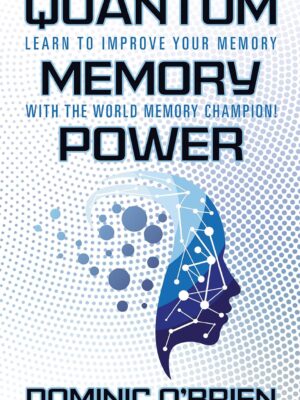Noise: A Flaw in Human Judgment
Secure Checkout with Amazon!
- Top-Rated Books
- Readers Satisfaction
- Verified Customer Reviews
Description
In Noise: A Flaw in Human Judgment, authors Daniel Kahneman, Olivier Sibony, and Cass Sunstein expose a hidden but pervasive problem in decision-making—noise. Noise is defined as the unwanted and unpredictable variability in human judgments that ideally should be consistent. When a decision-making process is noisy, outcomes that should be similar are instead scattered, leading to discrepancies that can be costly, unfair, and even harmful.
Imagine two doctors diagnosing the same symptoms but recommending vastly different treatments, or two judges sentencing similarly situated defendants to different prison terms. These examples illustrate how noise affects fields like medicine, law, business, education, and many other areas where consistency in judgment is vital. The authors delve into the types of noise that contribute to these unpredictable differences, including system noise, level noise, and pattern noise.
Noise is distinctly different from bias, a concept that has been widely studied by psychologists, economists, and social scientists. While bias leads to systematic errors by pushing judgments in a particular direction, noise represents randomness and scatter in decisions. For instance, if a company systematically favors hiring candidates with certain characteristics, that reflects bias; however, if different interviewers hire vastly different types of candidates with no clear reason, that points to noise. Kahneman, Sibony, and Sunstein argue that while bias is frequently addressed, noise is often overlooked, leading to inconsistent and unreliable decisions.
Types of Noise and Their Effects on Decision-Making
The authors categorize noise into three primary types, each contributing differently to variability in judgments.
- System Noise: This is the variability in judgments made by different individuals performing the same task. For example, if two physicians examining similar patients recommend completely different courses of action, that’s system noise at play. System noise can be particularly damaging in organizations where consistency is crucial, such as in courts or hospitals.
- Level Noise: Level noise is created when there are consistent differences between individuals who perform the same tasks. One example might be a teacher who grades students more leniently than their colleagues, leading to variation in students’ scores based on who marks their work. In healthcare, this might mean one doctor prescribes medication more often than another, not because of patient needs but due to personal tendencies.
- Pattern Noise: Pattern noise arises when a single person’s judgments vary depending on factors like mood, time of day, or context. For example, a judge might be more lenient in the morning and harsher in the afternoon, or a recruiter may evaluate candidates differently based on recent interactions or personal circumstances. Pattern noise is especially insidious because it can be hard to predict or detect, making it difficult to mitigate.
The combined effect of these three types of noise can create inconsistencies that undermine fairness and efficiency. For example, in hiring processes, some applicants might be unfairly advantaged or disadvantaged based on the random variability in interviewers’ evaluations. In law enforcement or social services, these discrepancies can result in unequal treatment of individuals who should, by all other factors, be treated similarly.
Kahneman and his co-authors demonstrate that noise can lead to significant economic and social costs. Inconsistent decisions mean that resources may be allocated inefficiently, and people may be unfairly judged or treated. This variability creates an environment where individuals cannot reliably anticipate outcomes, leading to a loss of trust in the institutions and processes meant to serve them.
Reducing Noise for Fairer and More Consistent Decisions
Given the negative impacts of noise, the authors advocate for strategies to mitigate it within organizations and institutions. One primary method they propose is the noise audit, a process for identifying the degree of variability in judgments across individuals and roles. Noise audits can help organizations understand the level of noise in their decision-making processes, offering insights into where inconsistencies arise and why.
To reduce system noise, organizations can adopt more standardized procedures and criteria for decision-making. For example, in hiring, using structured interviews with standardized questions and scoring systems can help reduce variability between interviewers. Similarly, in medical settings, clinical guidelines can provide standardized protocols that reduce differences in treatment recommendations. The authors also suggest that decision-makers engage in “decision hygiene,” a set of practices that minimize noise. Decision hygiene includes practices like setting clear standards, avoiding unnecessary complexity, and using algorithms to support human judgment where appropriate.
Another tool the authors endorse is algorithms and data-driven decision support systems. While human intuition and expertise are valuable, they are often susceptible to noise. Algorithms, when designed and implemented carefully, can provide more consistent recommendations. In fields like finance, for instance, algorithm-based tools are widely used to guide investment decisions, removing some of the unpredictability associated with human judgment. By relying on data and established criteria, organizations can limit the effects of pattern and level noise in critical decision-making areas.
One might worry that reducing noise will lead to rigid or mechanical processes that ignore the complexities of human experience. However, Kahneman and his co-authors argue that balancing judgment with guidelines does not necessarily remove humanity from the equation. Instead, it helps protect individuals from the effects of arbitrary decisions that could otherwise shape their lives unpredictably. Moreover, by acknowledging noise as a genuine problem, organizations are better equipped to create fairer, more transparent, and more efficient systems.
In conclusion, Noise opens readers’ eyes to an overlooked yet fundamental issue in human judgment. By highlighting the unpredictable nature of noise and providing practical strategies for reducing it, the authors encourage organizations to pursue greater consistency and fairness. With a thoughtful approach to mitigating noise, individuals and institutions alike can work toward a world where judgments are more predictable, reliable, and just.





Reviews
There are no reviews yet.